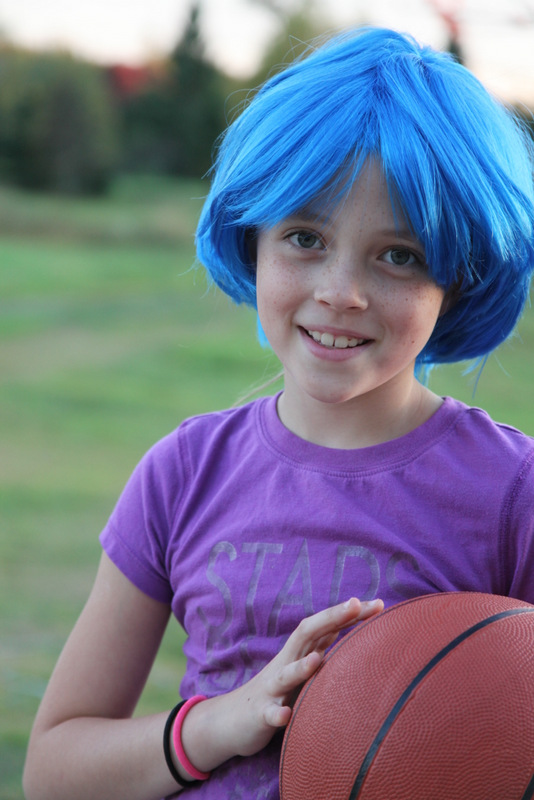September 29, 2015, by Kristin Neva
Sara jumped off the court and threw the ball into the basket, winning a round of lightning. She turned to me and smiled, and I gave her a thumbs up. She bounded from one side of the court to the other.
The week before, at basketball camp, Sara wasn’t able to make a basket. Her throws fell short of the rim, but I knew she was just as strong as the other girls. She can do cartwheels and flips, and she can cross the monkey bars. I told her, “Today, ask your coach what you need to do to get the ball higher.” I didn’t know how to help her — I was one of those kids picked last during gym class. Before I left for my workout, she was already talking to her coach.
That’s my Sara. She’s confident and coachable. She’s energetic and optimistic, and not much phases her, except for creepy, Halloween displays. Some creature jumped out at her in a Halloween aisle at Menard’s when she was four, and she’s been scarred.
At Snap Fitness, I ran on the elliptical and listened to a podcast with author Elizabeth Gilbert. She talked about fear and the creative process. She talks to it, as if it’s a person, saying something like, “Fear, you’re not all bad. You saved my life many times and kept me from dangerous places and people, but you can back off now. I’m not going to die writing this book.”
Parts of me compete for attention. Joy delights in watching Sara grow into her confident, athletic self. Anger demands to know why God won’t answer our prayers for healing, or at least halt Todd’s decline so we could adjust to life with disability. Sorrow fills me when I think that this life is normal for my children. “Will Daddy always have ALS?” Isaac asked me the other day. He remembers when Todd was able to draw a tractor for him to color. “Me and Sara are getting bigger. Daddy’s getting littler,” Isaac observed a few years ago when I helped Todd get into the van and put on his seatbelt.
It’s the ying and yang of life. You can’t have the love without the grief. The joy without the sadness. Being human encompasses both.
When Todd was first diagnosed I sought out a woman who had lived with her husband’s ALS for ten years. They had a ten-year-old son. I told her, “I’m hoping Todd’s disease progresses as slowly, but I don’t want to spend the next ten years grieving.”
“You learn to compartmentalize it,” she told me.
It’s a good thought but hard to do. I never forget the cloud we live under, even as I have unbridled delight in watching Sara grow into the person she’s becoming. My feelings consume me. One minute happy. One minute sad.
After my workout, I picked up Sara from basketball camp. We headed to the Halloween Superstore to get a blue wig — she wants to be Joy from the movie Inside Out. We ordered a little, yellow dress from Kohl’s. She will make a convincing Joy, not just in appearance, but in her personality. She embodies Joy.
As we neared the store, she froze. She stared at a bloodied, screeching clown. She refused to go in. I asked an employee if I could bring the blue wig out to the hallway to have her try it on. “Sure, there was another girl who wouldn’t come in either.”
The wig fit perfectly, and Sara beamed. “I’m going to be one of the fruit of the Spirit,” she told me.
“Yes you are.”
She got quiet, then asked, “Why isn’t Isaac scared to go in there and I am?”
The prior afternoon, I brought Isaac in there to buy a Police Boy outfit. He loved the experience, and came home to tell Sara about a wrinkled witch that cackled and said, “I’ll have you for dinner.”
“Your fear is okay,” I told her, channeling Elizabeth. “Talk to it. Tell it, ‘Fear, you keep me away from nasty, scary stuff and that’s a good thing. You can go away now.’”
My confident, coachable girl repeated the line, and Fear backed off. Her face relaxed.
I’m going to try the same with Sorrow when it overwhelms me. “Sorrow, you’re helpful because you help me love other people and have compassion for their suffering, but you can’t have all the space, because Joy lives here too.”

